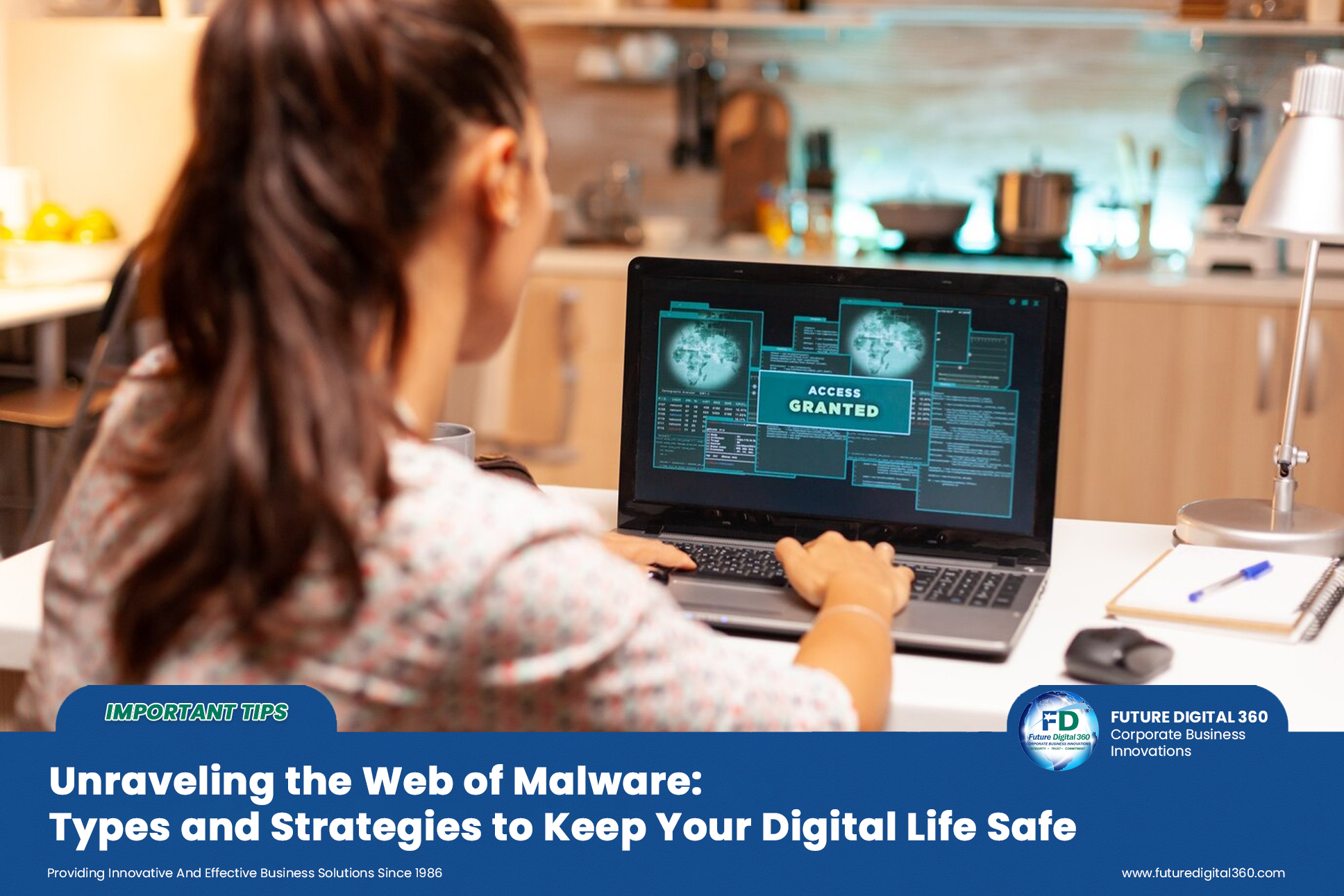In the ever-evolving world of technology, malware has become a significant threat to individuals and organizations alike. Malware, short for malicious software, refers to any program or code designed to harm, disrupt, or gain unauthorized access to a computer system or network. With new types of malware emerging every day, it is crucial to understand the different categories and implement effective prevention strategies to safeguard your digital life.
Types of Malware
• Viruses
Viruses are self-replicating malware that can spread from one computer to another. They can be transmitted through email attachments, software downloads, or infected removable storage devices. Once activated, they can corrupt files, delete data, or cause system crashes.
• Worms
Worms are similar to viruses but can replicate themselves without needing human intervention. They can exploit security vulnerabilities in computer systems and networks, causing widespread damage by consuming bandwidth, crashing servers, or launching Distributed Denial of Service (DDoS) attacks.
• Trojans
Trojans are malicious programs disguised as legitimate software. They trick users into installing them by appearing as useful or harmless applications. Once inside the system, Trojans can steal sensitive information, such as login credentials, and allow unauthorized access to the infected computer.
• Ransomware
Ransomware is a type of malware that encrypts a victim’s data, making it inaccessible. The attacker then demands a ransom, usually in the form of cryptocurrency, to provide the decryption key. Failure to pay the ransom may result in the loss of the data or further extortion attempts.
• Spyware
Spyware is designed to surreptitiously gather information about a user or their computer’s activity. It can track keystrokes, record online behavior, and steal personal data, which can be used for identity theft or targeted advertising.
• Adware
Adware is malicious software that displays unwanted advertisements on the user’s device. It can also track browsing habits to display targeted ads, which can be intrusive and potentially lead to exposure to other malware.
• Rootkits
Rootkits are stealthy malware that grant unauthorized access to a computer system. They can hide their presence from the user and other security software, allowing attackers to maintain persistent control over the infected device.
Effective Prevention Strategies
- Keep Software and Operating Systems Up-to-date
Regularly update your operating system and software applications to patch any security vulnerabilities that malware could exploit.
- Use Antivirus and Antimalware Software
Install reputable antivirus and antimalware software on your devices and keep them updated to detect and remove malware effectively.
- Practice Safe Browsing Habits
Avoid visiting suspicious websites, clicking on unknown links, or downloading files from untrusted sources. Be cautious when opening email attachments, especially those from unknown senders.
- Implement Strong Passwords and Two-Factor Authentication
Use unique, complex passwords for all your accounts and enable two-factor authentication whenever possible. This makes it more difficult for attackers to gain unauthorized access to your personal information.
- Backup Your Data Regularly
Regularly back up your important data to an external storage device or cloud service. In case of a ransomware attack, you can restore your data without paying the ransom.
- Educate Yourself and Others
Stay informed about the latest malware threats and prevention techniques. Share this knowledge with friends, family, and colleagues to create a more secure digital environment.
Understanding the various types of malware and implementing robust prevention strategies are essential to safeguard your digital life. By staying vigilant, keeping your software up-to-date, and practicing safe browsing habits, you can significantly reduce the risk of falling victim to malware attacks. Remember, an ounce of prevention is worth a pound of cure when it comes to protecting your valuable data and devices.
As the leading IT Company in the USA, Future Digital 360 gives you our services that can help your company grow and protect from cyber criminals. We offer Cyber Security Services, Web Services, Communication Solutions, Managed Network Services and Multifunctional Products. It is our vision to build a culture based on traditions of innovation and creativity.
